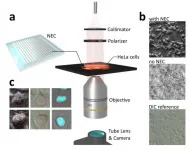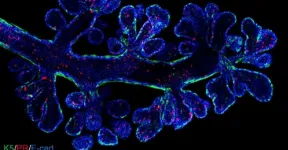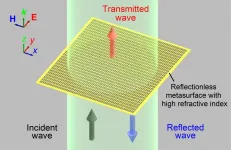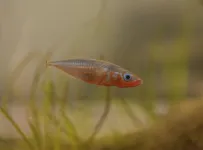Is the past (and future) there when nobody looks?
2021-05-14
(Press-News.org) In 1961, the Nobel prize winning theoretical physicist Eugene Wigner proposed what is now known as the Wigner's friend thought experiment as an extension of the notorious Schroedinger's cat experiment. In the latter, a cat is trapped in a box with poison that will be released if a radioactive atom decays. Governed by quantum mechanical laws, the radioactive atom is in a superposition between decaying and not decaying, which also means that the cat is in a superposition between life and death. What does the cat experience when it is in the superposition? Wigner sharpened the question by pushing quantum theory to its conceptual limits. He investigated what happens when an observer also has quantum properties.
In the thought experiment an observer, usually called Wigner's friend, performs a quantum measurement and perceives an outcome. From the point of view of another observer, called Wigner, the measurement process of the friend can be described as a quantum superposition. The fact that quantum theory sets no validity limits for its application leads to a clear tension between the perception of the friend, who sees a specific single result, and the description of Wigner, who observes the friend in a superposition of different perceptions. This thought experiment thus raises the question: What does it mean for an observer in a quantum superposition to observe the result of a measurement? Can an observer always trust what they see and use this data to make predictions about future measurements?
In their recent paper published in Communications Physics, a team of researchers, led by Caslav Brukner, from the University of Vienna, the Institute of Quantum Optics and Quantum Information (IQOQI-Vienna) of the Austrian Academy of Sciences and the Perimeter Institute for Theoretical Physics investigate the limits that Wigner's friend's thought experiment imposes on an observer's ability to predict their own future observations. To this end, the authors identify a number of assumptions, all traditionally considered to be at the core of quantum formalism. These allow an observer in standard experimental situations to predict the probabilities for future outcomes, on the basis of their past experiences. The assumptions constrain the probabilities to obey quantum mechanical laws. However, the researchers prove that these assumptions for Wigner's friend cannot all be satisfied in the thought experiment. This work raises important questions about the "persistent reality" of the friend's perceptions. Indeed, the authors show that in a Wigner's friend scenario, it is impossible to consider the friend's perceptions to be coexistent at different points in time. This makes it questionable whether a quantum observer in general can consider their own past or future experiences to be as real as their present ones. Philippe Allard Guérin, the lead author of the study, says "Our work shows that at least one of three key assumptions of quantum mechanics must be violated; which one depends on your preferred interpretation of quantum mechanics."
INFORMATION:
Publication Communications Physics:
Philippe Allard Guérin, Veronika Baumann, Flavio Del Santo & ?aslav Brukner: A no-go theorem for the persistent reality of Wigner's friend's perception. Communications Physics, 2021.
DOI: 10.1038/s42005-021-00589-1
[Attachments] See images for this press release:
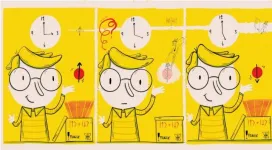
ELSE PRESS RELEASES FROM THIS DATE:
2021-05-14
A study led by LMU plant biologist Hans-Henning Kunz uncovers a new role for ion transporters: they participate in gene regulation in chloroplasts.
In plants, photosynthesis takes place in intracellular 'factories' called chloroplasts. Plant chloroplasts evolved from photosynthetic cyanobacteria, which were engulfed by a non-photosynthetic cell in the course of evolution. As a result of this evolutionary event, chloroplasts possess two envelope membranes, and have retained functional remnants of their original cyanobacterial genomes. Henning Kunz (LMU Biocenter), his group, and their collaborators have now demonstrated that ...
2021-05-14
Input one, output one; input two, output two; input three; output purple --what kind of system is this? Computer algorithms can exist as non-deterministic systems, in which there are multiple possible outcomes for each input. Even if one output is more likely than another, it doesn't necessarily eliminate the possibility of putting in three and getting purple instead of three. Now, a research team from Iowa State University has developed a way to control such systems with more predictability. The results were published in IEEE/CAA Journal of Automatica Sinica.
"The supervisory control problem for discrete event systems under control involves ...
2021-05-14
The ability to visualize transparent objects such as biological cells is of fundamental importance in biology and medical diagnostics. Conventional approaches to achieve this include phase-contrast microscopy and techniques that rely on chemical staining of biological cells. These techniques, however, rely on expensive and bulky optical components or require changing, and in some cases damaging, the cell by introducing chemical contrast agents. Significant recent advances in nanofabrication technology permit structuring materials on the nanoscale with unprecedented ...
2021-05-14
Australian researchers have documented the diversity of cells in the human breast, explaining the relationship between healthy breast cells and breast cancer cells.
The research, which relied on expertise spanning from breast cancer biology through to bioinformatics, measured gene expression in single cells taken from healthy women and cancerous breast tissue, including tissue carrying a faulty BRCA1 gene. This enabled the researchers to create an 'RNA atlas' that details the different cells found in these tissues.
The atlas, which was described in EMBO Journal, ...
2021-05-14
Japanese researchers successfully tested reflectionless, highly refractive index metasurface that may eventually be used in practical applications to send, receive, and manipulate light and radio waves in the terahertz waveband (THz). THz is measured in millionths of a meter, known as micrometers. The metasurface, an artificial two-dimensional flat material, was made of micro-sized cut metal wires of silver paste ink placed on both the front and back of a polyimide film. The team, led by Takehito Suzuki, Associate Professor at the Tokyo University of Agriculture and Technology (TUAT) Institute of Engineering, published their findings on April 29, 2021 in Optics Express.
Such flat metasurfaces ...
2021-05-14
Psychology researchers at UC Santa Cruz have found that playing games in virtual reality creates an effect called "time compression," where time goes by faster than you think. Grayson Mullen, who was a cognitive science undergraduate at the time, worked with Psychology Professor Nicolas Davidenko to design an experiment that tested how virtual reality's effects on a game player's sense of time differ from those of conventional monitors. The results are now published in the journal Timing & Time Perception.
Mullen designed a maze game that could be played in both virtual reality and conventional formats, then the research team recruited 41 UC Santa Cruz undergraduate ...
2021-05-14
The COVID-19 pandemic has been shown to have caused a significant strain on the healthcare system and resources in the United States. However, data regarding the impact of the virus on hip fractures, primarily seen in elderly patients, is lacking.
Researchers at Hospital for Special Surgery (HSS) sought to compare characteristics and outcomes of hip fracture patients admitted during the COVID-19 outbreak to patients admitted before the outbreak. They also examined characteristics and outcomes of hip fracture patients with and without the virus. Their findings were presented at the 2021 Spring American Society of Regional Anesthesia and ...
2021-05-14
Interim results of a study conducted by researchers at Hospital for Special Surgery (HSS) suggest that oral tranexamic acid (TXA) is non-inferior to intravenous (IV) TXA in preventing blood loss in total knee and total hip replacement surgery. These findings were presented at the 2021 Spring American Society of Regional Anesthesia and Pain Medicine (ASRA) Annual Meeting.1
Previously available information suggests that oral, IV and topical TXA are all effective at reducing blood loss and drastically reducing blood transfusion rates during and after surgery, but research with direct comparisons for each method is limited.
"TXA in orthopedic surgery has become the standard ...
2021-05-14
While it has been said that the eyes are a window to the soul, a new study shows they could be a means for understanding diseases of the brain. According to new research by scientists at the UCSF Weill Institute for Neurosciences, retinal scans can detect key changes in blood vessels that may provide an early sign of Alzheimer's, while offering important insights into how one of the most common Alzheimer's risk genes contributes to the disease.
"The most prevalent genetic risk for Alzheimer's disease is a variant of the APOE gene, known as APOE4," said lead author Fanny Elahi, MD, PhD. "We still don't fully understand how this variant increases risk of brain degeneration, we just know that it does, and that this risk is modified by sex, race, and lifestyle. "Our ...
2021-05-14
Climate change is exacerbating problems like habitat loss and temperatures swings that have already pushed many animal species to the brink. But can scientists predict which animals will be able to adapt and survive? Using genome sequencing, researchers from McGill University show that some fish, like the threespine stickleback, can adapt very rapidly to extreme seasonal changes. Their findings could help scientists forecast the evolutionary future of these populations.
A popular subject of study among evolutionary ecologists, stickleback are known for their different shapes, sizes, and behaviours - they can even live in both seawater and freshwater, and under a wide range of temperatures. But what ...
LAST 30 PRESS RELEASES:
[Press-News.org] Is the past (and future) there when nobody looks?

